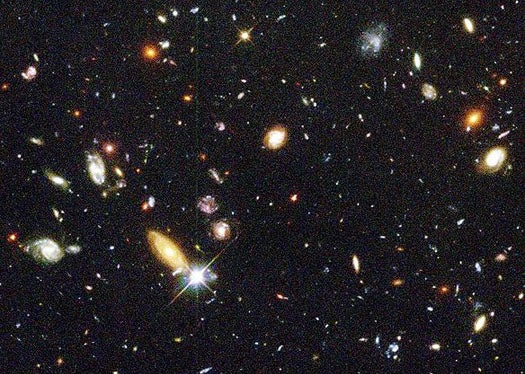New Model Says the Cosmos Is At Least 250 Times Larger Than the Visible Universe
How big is the universe anyhow? We know the universe is roughly 4 billion years old and we know how...

How big is the universe anyhow? We know the universe is roughly 4 billion years old and we know how far light travels in a year, so ostensibly it would seem the visible universe is contained to a radius of 14 billion light years. But we know that photons in the cosmic microwave background have traveled some 45 billion light years to reach earth (because the universe is also expanding the most distant visible objects are actually further than 14 billion light years), giving the universe an apparent diameter of at least 90 billion light years.
So how big is it really? A new mathematical analysis says its at least 250 times larger than the visible universe. Which is really, really big.
But it’s not actually the biggest proposed size of the universe. When cosmologists crunch their data, they use different models to give values to the universe’s curvature and therefore it’s size. Since we don’t know the shape of the universe, or whether it’s flat or open or closed or infinite, so we use different benchmarks to make our best guesses. This leads to a huge range of values assigned to the size of the universe, each as un-provable as the last.
So Mihran Vardanyan at Oxford and a few of his colleagues did what outwardly seems obvious but is actually quite difficult: they averaged the results of all this data in the easiest way they could. Using a complex mathematical technique called Bayesian model averaging they found a way to constrain the complexity of the individual models themselves in a way that is much stricter than the constraints on the models themselves. In other words, Bayesian model averaging itself is complex, but it produces a simplified solution from complex models.
What is that simple solution? They found that the curvature of the universe is strictly constrained near a zero value, meaning the universe is likely flat. It’s also at least 250 times bigger than the Hubble volume, which is roughly the size of the visible universe.
Elegance in simplicity; what’s not to like? If you require more complexity, Vardanyan and company’s paper can be found at arXiv.